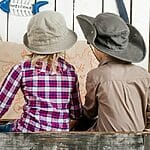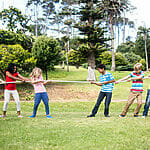Are you ready to explore a treasure trove of free homeschool history curriculum and resources? Get ready to embark on a journey through time with me!
As a homeschooling parent, I know firsthand how important it is to find resources that engage and inspire our children to learn. That’s why I’ve scoured the internet to find the best free history and social studies resources out there.
Think of these resources as a map that will guide you and your children on a journey through the past. From online textbooks to interactive programs, you’ll find everything you need to help your children discover the wonders of history.
So, grab your backpack and let’s get started on this exciting adventure!
Key Takeaways
- Interactive projects can make history come alive for students and help them use their creativity and critical thinking skills.
- Incorporating multicultural perspectives can help children develop a deeper understanding and appreciation for diversity.
- Online classes and programs provide a convenient and engaging way to learn about different cultures and historical events.
- Visiting local museums or historical sites, using online archives and resources, hosting a historical reenactment, and creating their own primary sources are all ways to incorporate primary sources into homeschool history curriculum.
Engaging Curriculum Ideas
I love exploring free homeschool history curriculum and resources, and there are plenty of options available for engaging curriculum ideas. One way to make history come alive for students is by incorporating interactive projects.
For example, you can have your child create a timeline of a historical event or person using pictures and information they find online. Another idea is to have them create a mock interview with a historical figure, using facts they’ve learned in their studies. These types of projects not only make history more engaging, but they also allow your child to use their creativity and critical thinking skills.
Another way to make history more interesting is by incorporating multicultural perspectives. Learning about different cultures and their impact on history can help your child develop a deeper understanding and appreciation for diversity.
You can incorporate multicultural perspectives by reading books or watching documentaries about different cultures, or by having your child research and present on a specific culture or historical figure. Programs like Joy and Valor Life for U.S. History in high school also provide a well-rounded perspective of American history, including the contributions of diverse groups.
By incorporating interactive projects and multicultural perspectives, you can make history more engaging and relevant for your child.
Online Classes and Programs
Online classes and programs have become increasingly popular among homeschool students as a way to supplement their history and social studies education. With interactive simulations and virtual field trips, these programs provide a convenient and engaging way to learn about different cultures and historical events.
One great resource for online classes is YAPA Kids, which offers a variety of courses for grades 1-8. Their social studies classes cover topics such as world cultures, geography, and U.S. history. Another great option is American Heritage, which provides programs to supplement American history education. Their online courses include topics such as the American Revolution, the Constitution, and the Civil War.
Virtual field trips are also a fun way to explore history and social studies. Websites like Scholastic and Google Arts & Culture offer virtual tours of historical landmarks and museums from around the world.
By incorporating these online classes and programs into their homeschool curriculum, students can gain a deeper understanding and appreciation for history and social studies.
Where Can I Find Free Online Curriculum at Homeschool Conventions?
Looking for online curriculum at homeschool conventions? You’re in luck! Homeschool conventions often offer free resources for parents seeking digital curriculum options. Whether you attend in-person or virtual events, you’ll find a plethora of online curriculum materials for various subjects and grade levels. Take advantage of these conventions to discover high-quality, cost-free educational resources for your homeschooling journey.
Incorporating Primary Sources
Incorporating primary sources adds depth and authenticity to the study of history and social studies, allowing for a more immersive and engaging learning experience. By using artifacts such as letters, photos, and diaries, students can gain a firsthand understanding of the time period they’re studying.
Historical reenactments also provide a unique way for students to engage with history through role-playing and hands-on activities.
Here are four ways to incorporate primary sources into your homeschool history curriculum:
-
Visit local museums or historical sites to see artifacts and learn about the history of your community.
-
Use online archives and resources to access primary sources such as letters, speeches, and government documents.
-
Host a historical reenactment in your backyard or local park, allowing students to dress up and act out scenes from history.
-
Have students create their own primary sources, such as journals or artwork, to document their own experiences and understanding of history.
By incorporating primary sources into your history curriculum, you can bring history to life and create a more engaging learning experience for your students.











